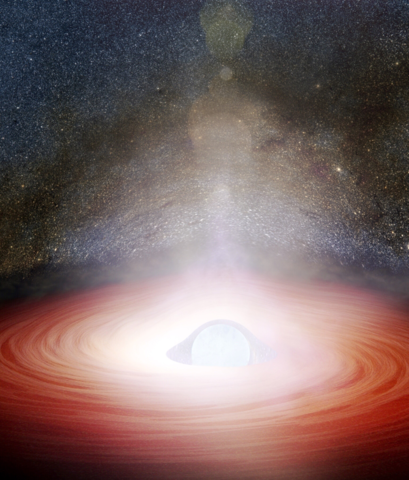
What is the densest material in the universe? Osmium is the densest material on Earth, but the densest material in the universe (that we know of) is that of a neutron star.
What is density? Density is the amount of mass that something has in relation to the space that it occupies. For example, a ton of feathers and a ton of bricks weigh the same, but the feathers would take up far more space, so they are less dense that the bricks denser. It is calculated as mass divided by volume. When we look at the density of different materials, we have to look on the molecular level. A 1cm3 cube of copper weighs more than a 1cm3 cube of wood. This is because the molecules in the copper weigh more than the molecules in the wood and they are more tightly packed together.
A teaspoonful of osmium is dense and would weigh about 100 g. For comparison, a teaspoonful of water is less dense and weighs 4.93 g. A teaspoonful of gold would weigh about 94 g. Osmium is a pretty dense material, but there is not enough pressure on Earth to make anything naturally denser.
However, that is in the open air. If you put the feathers in a pressure chamber and slowly increase the pressure, the space that they occupy would slowly decrease. If you kept increasing the pressure, you would reach a point where the feathers were denser than the bricks. If you could keep going, the feathers would get smaller and smaller until they were a tiny, dense lump of feather.
There is a limit to the amount of pressure we can create on Earth, but the universe has managed to make a denser material under the ridiculously high pressure of a neutron star. A tablespoon of material from a neutron star would be so dense that it would weigh about 4 billion tons.
A neutron star can only be formed by a star that is at least 8 times larger than our sun. All stars begin as balls of hydrogen. Their enormous gravity causes nuclear fusion to start, and the hydrogen molecules are converted to helium, releasing energy. When all of the hydrogen is gone, the weight of the star causes it to collapse, which increases the pressure and starts the next reaction. In phase two, helium is converted into carbon and oxygen, again releasing energy. This process continues until the star has an iron rich core and no fuel left to burn. At this point it is only held together by the energy of the electrons inside the star pushing out. The weight of the star overcomes this energy,
and the star collapses in on itself, creating an enormous amount of heat and energy. This energy flings the outer surface of the star into space, creating a supernova. What is left of the core of the star is a neutron star.
The neutron star still has most of the weight of the original star, but in a much reduced space. The sheer weight of the star crushes the electrons and protons inside it together until they become neutrons and the neutrons occupy the smallest space physically possible. Our sun wouldn’t be able to do this. A star must be 10 to 20 times bigger than our sun to become a neutron star. And this star 20 times bigger than our sun would be crushed down to about the size of Vancouver.
This is the densest material that we know of. A neutron star is so dense that the escape velocity is half the speed of light and the tallest mountain would be less than 1mm tall. Anything crashing into a neutron star would be reduced to its atoms and those would be crushed. In fact, it would be impossible to get a teaspoon of a neutron star because the teaspoon would disintegrate.
A black hole has a higher density than a neutron star, but it is not a material as such, and you couldn’t have a teaspoonful of it.
So, on Earth, osmium is the densest material, with a teaspoonful weighing 100 g. However, the universe goes a bit better and a teaspoonful of material from a neutron star would weigh 4 billion tons. And this is what I learned today.
Source
https://www.middleschoolchemistry.com/lessonplans/chapter3/lesson1
https://en.wikipedia.org/wiki/Osmium
https://www.science.org/content/article/neutron-stars-billions-times-stronger-steel
https://en.wikipedia.org/wiki/Neutron_star
https://letstalkscience.ca/educational-resources/stem-in-context/life-and-death-stars
https://www.thoughtco.com/blue-supergiant-stars-3073592
http://hyperphysics.phy-astr.gsu.edu/hbase/Astro/pulsar.html
